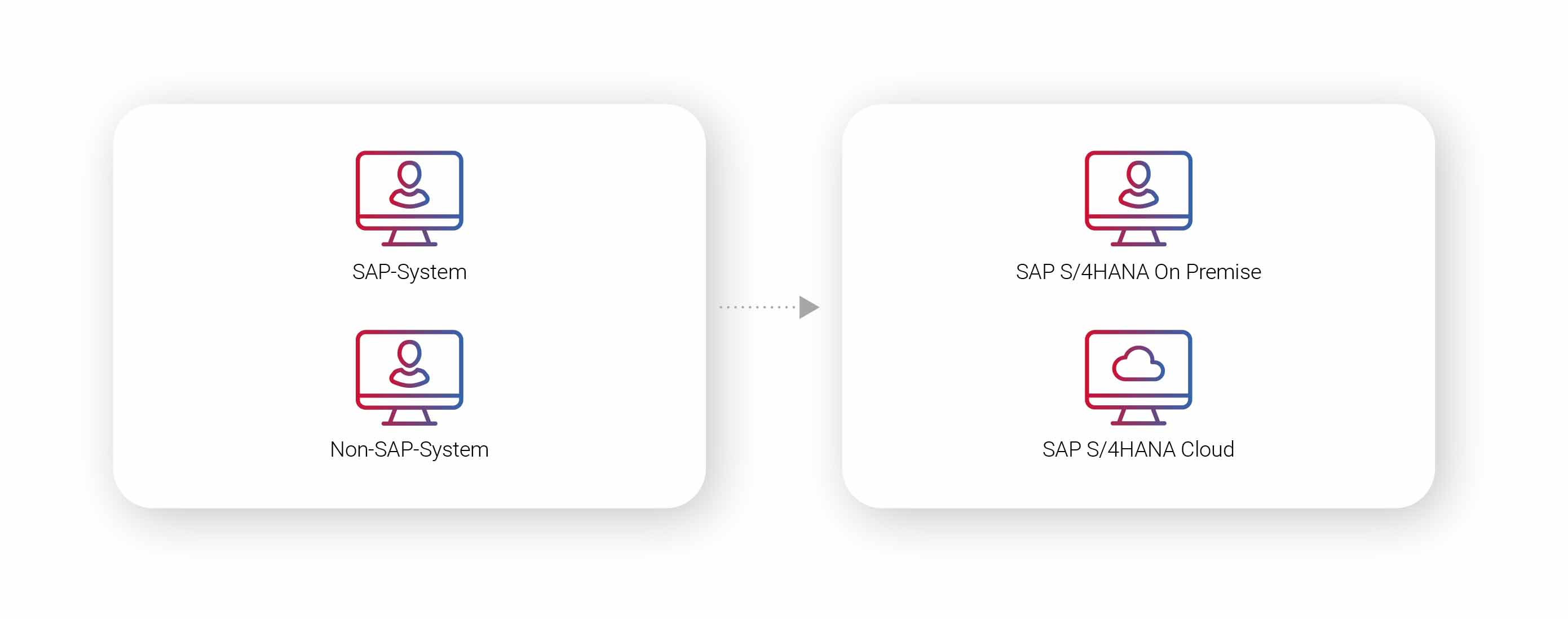SAP greenfield migration scenario
The new implementation of SAP S/4HANA.
SAP S/4HANA is completely reorganised in the SAP greenfield migration scenario. Processes and settings can be redefined and reconfigured. What are the opportunities and risks? What in particular needs to be considered during data migration?


How to transform your SAP environment with the customised SAP Greenfield migration approach
The simplified process of the SAP Greenfield migration scenario in four steps
-
A completely new system with new system identification is set up.
-
The SAP standard processes are checked. If necessary, the SAP standard customising is adapted or supplemented to meet individual requirements. Customised developments are implemented.
-
Definition of the required data. Ideally, this data is cleansed before the migration.
-
Migration of the cleansed data.
SAP operating models
All SAP operating models are possible in the SAP greenfield migration scenario. The SAP S/4HANA instance can be used on-premise or in the cloud (public or private). A mixed variant is also possible, in which an on-premise installation is available, but certain services are used independently in the cloud.
Advantages and disadvantages of the SAP greenfield migration scenario
Pros
The following advantages speak in favour of the SAP greenfield migration scenario:
- Lots of flexibility and & innovation potential
- All operating models possible
- Processes and associated IT workflows can be rethought and optimised
- Close to the SAP standard
- Legacy issues can be left behind
Cons
These disadvantages speak against the SAP greenfield migration scenario:
- Long implementation time
- High costs
- Increased implementation risk, as critical business processes are also affected
Time for data cleansing
In the SAP greenfield migration scenario, the processes and data in SAP S/4HANA are completely reorganised. The existing data must be prepared, transformed to the new data model and filtered if necessary. It is also possible to consolidate several existing systems in this scenario. The necessary data cleansing takes place in the old system or in a separate solution, ideally before the data migration to the SAP S/4HANA system. This is somewhat more complex overall. However, this is the only way to ensure that only high-quality data is transferred to the new system. Legacy data can be left behind.
WEBINAR ON DEMAND | Data migration made easy
4 steps to perfect data for the SAP S/4HANA® migration
Once the data has been cleansed and consolidated, migration becomes ‘child's play’. Find out more using the practical example of greenfield migration in our on-demand session.
And if you would like to read it all again at your leisure, please click here for the success story with Suva.
You might also be interested in:





